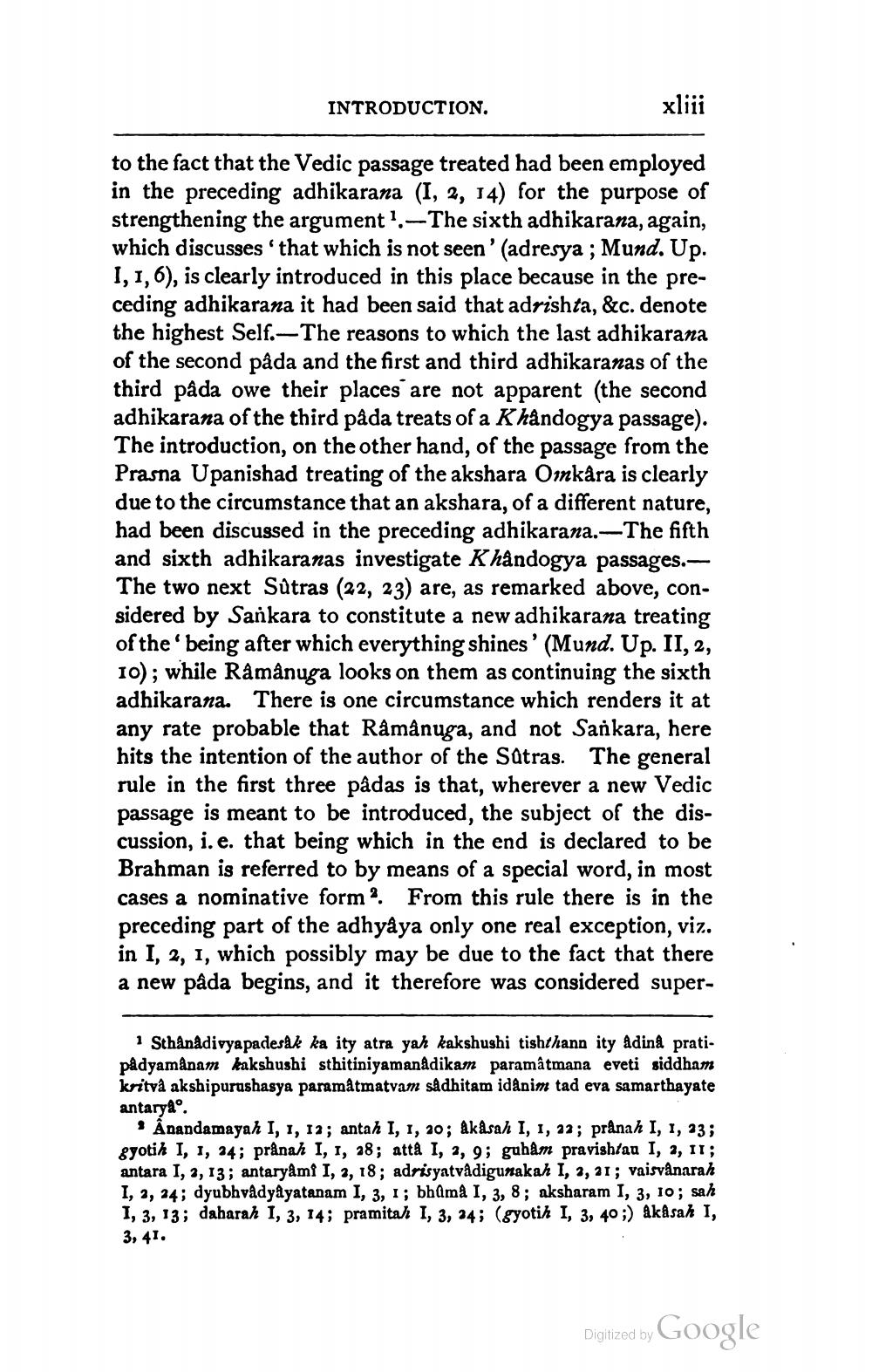________________
INTRODUCTION.
xliii
to the fact that the Vedic passage treated had been employed in the preceding adhikarana (I, 2, 14) for the purpose of strengthening the argument'.-The sixth adhikarana, again, which discusses that which is not seen' (adresya ; Mund. Up. 1,1,6), is clearly introduced in this place because in the preceding adhikarana it had been said that adrishta, &c. denote the highest Self.-The reasons to which the last adhikarana of the second pâda and the first and third adhikaranas of the third pâda owe their places are not apparent (the second adhikarana of the third påda treats of a Khåndogya passage). The introduction, on the other hand, of the passage from the Prasna Upanishad treating of the akshara Oinkára is clearly due to the circumstance that an akshara, of a different nature, had been discussed in the preceding adhikarana.—The fifth and sixth adhikaranas investigate K håndogya passages.The two next Sutras (22, 23) are, as remarked above, considered by Sankara to constitute a new adhikarana treating of the being after which everything shines' (Mund. Up. II, 2, 10); while Râmânuga looks on them as continuing the sixth adhikarana. There is one circumstance which renders it at any rate probable that Ramânuga, and not Sankara, here hits the intention of the author of the Satras. The general rule in the first three pâdas is that, wherever a new Vedic passage is meant to be introduced, the subject of the discussion, i.e. that being which in the end is declared to be Brahman is referred to by means of a special word, in most cases a nominative form. From this rule there is in the preceding part of the adhyâya only one real exception, viz. in I, 2, 1, which possibly may be due to the fact that there a new pâda begins, and it therefore was considered super
1 Sthånadivya padesak ka ity atra yah kakshushi tishthann ity adina pratipådyamanam kakshushi sthitiniyamanådikam paramâtmana eveti siddham kritvå akshipurushasya paramåtmatvam sådhitam idanim tad eva samarthayate antarya.
* Anandamayah I, 1, 12; antah I, 1, 20; akasah I, 1, 22; pranah I, 1, 23; syotik I, 1, 34; pranah I, 1, 28; atta 1, 2, 9; gubam pravishtau I, 2, 11; antara 1, 2, 13; antaryami I, 2, 18; adrisyatvådigunakah I, 2, 21; vaisvanarah 1, 2, 24; dyubhvadyâyatanam I, 3, 1; bhama 1, 3, 8; aksharam I, 3, 10; sah 1, 3, 13; daharah I, 3, 14; pramitar I, 3, 34; (gyotih I, 3, 40 ;) Akasah I, 3, 41.
Digitized by Google




